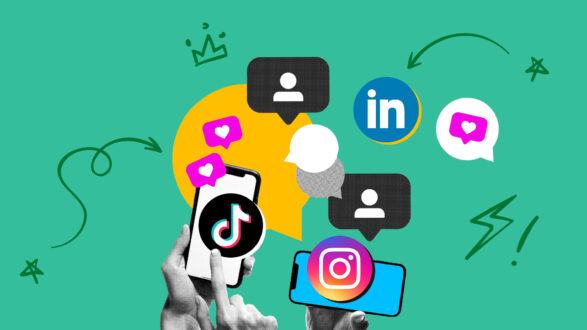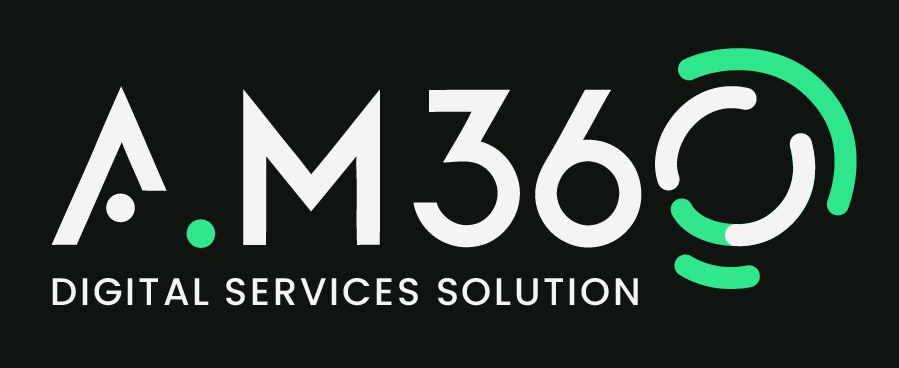
How Social Media Promotion Can Skyrocket Your Business Growth
Leveraging Strategy, Creativity, and Data to Dominate Digital Platforms In today’s hyper-connected world, social media promotion isn’t just an option—it’s a necessity for businesses aiming to thrive. With over 4.9 billion active social media users globally (Statista, 2023), platforms like Instagram, TikTok, LinkedIn, and Facebook have become battlegrounds for brand visibility, customer loyalty, and revenue growth. But success isn’t accidental. It requires a deliberate social media strategy, creative engagement tactics, and a deep understanding of tools like paid ads and organic reach. This comprehensive guide explores how businesses can harness social media promotion to fuel exponential growth. From crafting a content calendar to mastering viral marketing, we’ll break down actionable steps to build social media branding, boost customer interaction, and turn followers into advocates. 1. The Foundation: Building a Winning Social Media Strategy A robust social media strategy is the backbone of effective promotion. Without clear goals, target audience insights, and platform-specific tactics, even the most creative campaigns can fall flat. Key Components of a Social Media Strategy Goal Setting: Align social media efforts with business objectives. Are you aiming for brand awareness, lead generation, or sales? For example, Adobe uses Instagram to showcase creativity, driving both engagement and product sales. Audience Research: Use analytics tools (e.g., Meta Business Suite) to identify demographics, interests, and pain points. A B2B company might prioritize LinkedIn, while a Gen Z-focused brand leans into TikTok. Competitor Analysis: Study rivals’ successes and gaps. Tools like Sprout Social simplify tracking competitors’ top-performing content. Platform Selection: Focus on 2–3 platforms where your audience is most active. External Resource: HubSpot’s guide to creating a social media strategy offers templates for aligning goals with tactics. 2. Consistency Meets Creativity: The Power of a Content Calendar A content calendar ensures your brand stays top-of-mind without overwhelming your team. It balances promotional posts, educational content, and interactive formats while adapting to trends. Steps to Build an Effective Content Calendar Theme Mapping: Assign themes to specific days (e.g., #MotivationMonday, #ThrowbackThursday). Content Mix: Follow the 80/20 rule—80% educational/entertaining content, 20% promotional. Scheduling Tools: Platforms like Buffer or Hootsuite automate posting, freeing time for real-time customer interaction. Flexibility: Leave room for trending topics. For instance, Oreo’s “Dunk in the Dark” tweet during the 2013 Super Bowl blackout capitalized on real-time marketing. Pro Tip: CoSchedule’s content calendar template helps visualize your monthly plan. 3. Amplifying Reach: Paid Ads vs. Organic Reach While organic reach builds authenticity, paid ads provide precision targeting. Combining both maximizes visibility. Mastering Organic Reach Algorithm-Friendly Content: Platforms prioritize posts with high engagement. Ask questions, use polls, and encourage shares. Hashtag Strategy: Research niche and trending hashtags. For example, #BookTok propelled authors like Colleen Hoover to bestseller lists. Optimal Posting Times: Tools like Later analyze when your audience is most active. Maximizing Paid Ads ROI Audience Segmentation: Facebook Ads allow targeting by location, interests, and behavior. A/B Testing: Experiment with visuals, CTAs, and ad formats. A study by WordStream found A/B testing can improve click-through rates by 50%. Retargeting: Re-engage users who visited your site but didn’t convert. External Resource: Meta’s Blueprint Courses offer certification in paid ad strategies. 4. Crafting a Memorable Social Media Branding Social media branding goes beyond logos and colors—it’s about voice, values, and storytelling. Elements of Strong Branding Visual Identity: Use consistent filters (e.g., Canva templates) and brand colors. Glossier’s pink-and-white aesthetic is instantly recognizable. Brand Voice: Are you witty (Wendy’s) or inspirational (Patagonia)? Storytelling: Share behind-the-scenes content or customer success stories. Airbnb’s #LiveThere campaign highlighted real host experiences, boosting relatability. Case Study: Nike’s “Just Do It” campaigns blend motivational messaging with user-generated content, reinforcing brand ethos. 5. Viral Marketing: Sparking Exponential Growth Viral marketing can catapult your brand into the spotlight, but it requires a mix of timing, emotion, and shareability. Secrets to Viral Content Emotional Triggers: Content that evokes awe (Red Bull’s space jump), humor (Dollar Shave Club’s launch video), or nostalgia thrives. Challenges and Trends: The #IceBucketChallenge raised $115 million for ALS research by tapping into social participation. Influencer Collaborations: Partner with micro-influencers for authentic reach. External Resource: Contagious’s viral content study breaks down the science behind shareable campaigns. 6. Engagement Tactics: Turning Followers into Fans High engagement tactics signal platform algorithms that your content is valuable, boosting its reach. Proven Engagement Boosters Polls and Quizzes: Instagram Stories’ interactive features increase reply rates by 40% (Hootsuite, 2023). User-Generated Content (UGC): Repost customer photos with credit. GoPro’s #GoProTravel campaign relies entirely on UGC. Live Videos: Host Q&A sessions or product launches. Example: Starbucks’ #RedCupContest encourages customers to share holiday cup designs, driving thousands of entries annually. 7. Customer Interaction: Building Loyalty One Message at a Time Customer interaction on social media builds trust and loyalty. Responding promptly to comments or DMs can increase customer spend by 20% (Harvard Business Review). Best Practices for Interaction 24/7 Responsiveness: Use chatbots for instant replies outside business hours. Personalization: Address users by name and reference past interactions. Crisis Management: Handle complaints transparently. JetBlue’s apology tweets during flight delays set a benchmark for accountability. Tool Suggestion: Zendesk’s customer service software integrates social media channels for seamless management. 8. Measuring Success: Analytics and Adaptation Track metrics like engagement rate, click-throughs, and conversions to refine your strategy. Key Metrics to Monitor Reach/Impressions: How many users saw your content? Conversion Rate: Did social traffic lead to sales? Sentiment Analysis: Are mentions positive or negative? External Resource: Google Analytics’ social media tracking guide ties platform efforts to website behavior. Conclusion: The Future of Social Media Promotion From social media branding to viral marketing, the digital landscape offers endless opportunities for businesses ready to innovate. By blending strategic planning, creative content, and data-driven adjustments, brands can turn social platforms into growth engines. Start by auditing your current strategy, experiment with paid ads and engagement tactics, and remember: Authenticity and adaptability are key. As algorithms evolve, so must your approach—stay curious, stay connected, and watch your business soar. Final Resource: For daily updates on social media trends, follow Social Media Today.
Read More
Social Media Marketing: A Step-by-Step Guide to Growing Your Brand Online
Leverage Facebook, Instagram, LinkedIn, Twitter, Content, Ads, and Influencers to Boost Brand Awareness Introduction In today’s digital-first world, social media marketing isn’t just an option—it’s a necessity. With over 5 billion active social media users globally, platforms like Facebook, Instagram, LinkedIn, and Twitter offer unparalleled opportunities to connect with audiences, build brand awareness, and drive sales. However, success requires strategy, consistency, and a deep understanding of each platform’s unique dynamics. This 3,000-word guide will walk you through actionable steps to grow your brand online, covering Facebook marketing, Instagram growth, LinkedIn strategies, Twitter engagement, content marketing, social media ads, and influencer marketing. Let’s dive in. Step 1: Define Your Goals and Audience Before posting a single tweet or Instagram Story, clarify your objectives. Are you aiming to: Increase brand awareness? Drive website traffic? Generate leads? Boost sales via social media ads? Next, research your audience. Tools like Facebook Audience Insights and Google Analytics reveal demographics, interests, and behaviors. For example, LinkedIn caters to B2B professionals, while Instagram attracts Gen Z and millennials. Tailor your content marketing strategy to resonate with these segments. Pro Tip: Create buyer personas to visualize your ideal customer. This ensures your social media marketing efforts align with audience needs. Step 2: Master Platform-Specific Strategies Each social platform demands a unique approach. Let’s break them down: Facebook Marketing: Build Communities and Drive Sales With 3 billion monthly active users, Facebook remains a cornerstone of social media marketing. Optimize Your Page: Use a recognizable profile picture (e.g., logo), write a keyword-rich bio, and link to your website. Content Mix: Share videos (55% of users watch daily), carousel posts for product showcases, and polls to boost engagement. Facebook Ads: Target users by location, interests, and behaviors. Use dynamic ads to retarget website visitors. Groups: Create or join niche communities to foster loyalty. For example, Sephora’s Beauty Insider Community drives 2x higher engagement. External Resource: Meta Business Suite simplifies scheduling and analytics. Learn more here. Instagram Growth: Visual Storytelling and Reels Domination Instagram’s algorithm prioritizes Reels, so capitalize on short-form video. Profile Optimization: Use a branded hashtag in your bio (e.g., #JustDoIt) and link to landing pages via Linktree. Content Strategy: Reels: Post trending audio clips and tutorials. Stories: Use polls, quizzes, and “Swipe Up” links (for accounts with 10k+ followers). Guides: Curate product roundups or tips. Hashtags: Mix popular (1M+ posts) and niche tags (e.g., #SustainableFashion) to maximize reach. Collaborations: Partner with micro-influencers (10k–100k followers) for authentic promotions. Case Study: Gymshark grew to $1.4B using user-generated content (UGC) and influencer partnerships. LinkedIn Strategies: B2B Networking and Thought Leadership LinkedIn is the go-to for B2B social media marketing. Company Page: Showcase services, share case studies, and post job openings. Content Ideas: Long-form articles on industry trends. Infographics highlighting company milestones. Employee testimonials to humanize your brand. LinkedIn Ads: Use Sponsored Content and Message Ads to target decision-makers by job title. Engagement: Comment on posts from industry leaders to boost visibility. Stat Alert: LinkedIn drives 80% of B2B social media leads (Source). Twitter Engagement: Real-Time Conversations and Hashtag Trends Twitter’s fast-paced environment thrives on timely interactions. Profile Setup: Pin a tweet promoting your latest blog or product. Content Types: Threads breaking down complex topics. Participate in trending hashtags (e.g., #MotivationMonday). Respond swiftly to customer queries (users expect replies within 30 minutes). Twitter Ads: Promote trending tweets or run follower campaigns. Lists: Create private lists to monitor competitors or industry influencers. Step 3: Craft a Winning Content Marketing Strategy Content fuels social media marketing. Follow this framework: Content Calendar: Plan posts 1–2 months ahead using tools like Hootsuite or Asana. Balance promotional, educational, and entertaining content. Content Types: Blogs and eBooks (drive traffic via LinkedIn or Twitter). Videos (TikTok-style edits for Instagram, webinars for LinkedIn). Carousels (ideal for Facebook and Instagram how-tos). SEO Integration: Embed keywords like “social media ads” or “brand awareness” in captions and blog cross-posts. External Resource: Use Canva to design visually consistent posts. Explore templates. Step 4: Leverage Social Media Ads for Precision Targeting Paid ads amplify reach and conversions. Best practices: Facebook/Instagram Ads: Use the Advantage+ suite for automated targeting. A/B test ad creatives. LinkedIn Ads: Target by job title for lead generation. Twitter Ads: Promote viral tweets to capitalize on existing engagement. Stat Alert: Businesses earn 2forevery2forevery1 spent on Facebook Ads (Meta Report). Step 5: Boost Brand Awareness with UGC and Contests User-generated content (UGC) builds trust: Repost customer photos (with permission). Run hashtag contests (e.g., “Share your #OOTD with our product”). Feature testimonials in Stories or Reels. Example: GoPro’s #GoProTravel campaign generated 1 million UGC posts. Step 6: Partner with Influencers for Authentic Reach Influencer marketing drives 11x higher ROI than traditional ads: Micro-Influencers: Partner with niche creators (e.g., fitness coaches for activewear brands). Compensation: Offer free products, affiliate commissions, or flat fees. Track Metrics: Use tools like AspireIQ to monitor engagement and conversions. Case Study: Daniel Wellington grew to $200M using influencer campaigns. Step 7: Analyze and Optimize Use platform analytics (e.g., Instagram Insights) and tools like Google Data Studio to track: Engagement rate Click-through rate (CTR) Return on ad spend (ROAS) Adjust your strategy monthly based on data trends. Conclusion Mastering social media marketing requires blending creativity, data, and adaptability. By leveraging Facebook marketing, Instagram growth, LinkedIn strategies, Twitter engagement, content marketing, social media ads, and influencer marketing, you’ll build lasting brand awareness and a loyal audience. Start small, stay consistent, and watch your brand thrive online. FAQs How much should I budget for social media ads? Start with 5–5–10/day per platform, then scale based on ROI. Which platform is best for B2B? LinkedIn dominates B2B lead generation. How often should I post? Instagram: 3–5x/week; Twitter: 1–3x/day; LinkedIn: 2–3x/week. Ready to elevate your brand? Bookmark this guide and share it with your team! For more insights, explore HubSpot’s Social Media Marketing Guide.
Read More